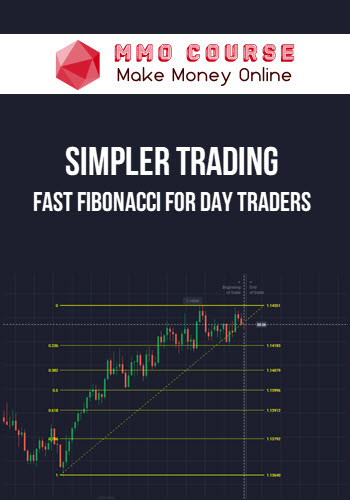Wall Street Prep – Financial & Valuation Modeling (Premium Package)
$499.00 $70.00
Total Sold: 1
Delivery: Instant Delivery
Description
Wall Street Prep – Financial & Valuation Modeling
Get the exact same program top investment banks and financial institutions use to train their professionals. Learn 3-Statement Modeling, DCF, Trading and Transaction Comps, M&A and LBO.
Learn the Core Financial & Valuation Modeling Skill Set:
- For students and professionals pursuing a career in investment banking, private equity, corporate finance or equity research.
- Build financial models in Excel from scratch using real case studies and best practices.
- Learn financial statement modeling, DCF, Comps, M&A and LBO modeling.
- The exact same training program used by leading financial institutions.
What You’ll Learn In Financial & Valuation Modeling?
Financial Statement Modeling
- In this course, you will develop a 3-statement model completely from scratch, inputting historical data and assumptions to project out financial statements using step-by-step instruction on selecting, locating, and developing appropriate projection drivers. At completion, you will have developed a complete and comprehensive three-statement model using various supporting schedules. This course lays the foundation of Wall Street Prep’s Financial and Valuation Modeling Certification Program as well as other industry-specific financial modeling programs.
DCF Modeling
- Building on the knowledge gained from the financial statement modeling course, you will be introduced to valuation analysis in general, and the DCF model in particular. We will continue to use Apple as the case study, and teach you how to value the company step-by-step. Along the way, you will learn how to estimate the weighted average cost of capital (WACC) in the real world, how to implement commonly used approaches to calculating terminal value, and all the nuances of DCF modeling. Finally, we will use data tables to analyze a broad range of scenarios given different assumptions.
M&A Modeling
- In this course, you will learn how investment banking and corporate finance professionals model mergers and acquisitions. We’ll start with a review of the current M&A landscape, and key M&A concepts like accretion / dilution, pricing structures (exchange ratios/collars/”walk-away” rights), acquisition accounting, and the step-by-step allocation of purchase price. We will then transition to the role of the investment banker in M&A. First by looking at real pitchbooks, OMs, and fairness opinions, and then, using Apple and Disney as our case studies, you will build a pull-no-punches M&A model that analyzes such a merger, correctly incorporating pro forma balance sheet and income statement adjustments.
Trading Comps Modeling
- “Comps” analysis is the quickest, most widely used valuation methodology, and fundamental part of the core valuation skill set of investment bankers and finance professionals. In this course, trainees learn how to select and “scrub” comparables, pick the right multiples and build dynamic comps models in Excel from scratch, using real case studies, industry best practices, and sensitivity analyses.
Transaction Comps Modeling
- Transaction comps analysis arrives at a company’s value not by building a discounted cash flow or looking at the trading values of peers, but by looking at the purchase prices of recently acquired comparable companies. In this step-by-step course, you’ll learn how to select comparable acquisitions and find important disclosures in filings. Next, you will spread real transactions on your own. We’ll finish with a discussion about how to interpret the comp outputs and how the model results are presented in practice.
LBO Modeling
- Leveraged buyout (LBO) modeling is used widely by investment banks and private equity firms and is often part of a finance interview. In this course, you will learn how to build a real, complex LBO model from scratch. You will start by learning about basic LBO concepts, typical deal structures, and current industry dynamics. You will then begin the step-by-step modeling, covering the most common and challenging issues that emerge when modeling buyouts. The course concludes with a sensitivity and scenario analysis, as well as how to build output tables that are key to any professional-grade LBO analysis.
Sale Page: Wall Street Prep – Financial & Valuation Modeling
Delivery Policy
When will I receive my course?
You will receive a link to download your course immediately or within 1 to 21 days. It depends on the product you buy, so please read the short description of the product carefully before making a purchase.
How is my course delivered?
We share courses through Google Drive, so once your order is complete, you'll receive an invitation to view the course in your email.
To avoid any delay in delivery, please provide a Google mail and enter your email address correctly in the Checkout Page.
In case you submit a wrong email address, please contact us to resend the course to the correct email.
How do I check status of my order?
Please log in to MMOCourse account then go to Order Page. You will find all your orders includes number, date, status and total price.
If the status is Processing: Your course is being uploaded. Please be patient and wait for us to complete your order. If your order has multiple courses and one of them has not been updated with the download link, the status of the order is also Processing.
If the status is Completed: Your course is ready for immediate download. Click "VIEW" to view details and download the course.
Where can I find my course?
Once your order is complete, a link to download the course will automatically be sent to your email.
You can also get the download link by logging into your mmocourse.hk account then going to Downloads Page.
Related products
Total sold: 5
Total sold: 2
Total sold: 5










